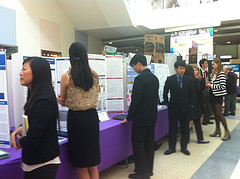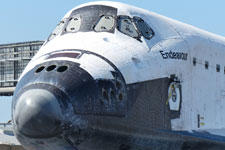The California Science Center Board of Directors could vote at its meeting June 5 to approve the latest terms of the Los Angeles Memorial Coliseum lease agreement with USC.
If approved by the Board, the agreement would give USC full managing rights at the state historical landmark and guarantee the university 70 percent of the parking spaces in the Science Center’s deck on 25 event days per year (33 if the NFL uses the stadium temporarily). It would also extend USC’s lease from 2054, the expiration date agreed upon in a December 2012 plan, to 2111 — a 98-year deal.
But opponents of the deal spoke out at public forums this week, saying that the loss of parking would take both revenue and visitors away from the California African American Museum , the California Science Center and the Natural History Museum of Los Angeles County. [Read more…]










 Photo courtesy of Justin Higuchi (jus10h) at Flickr.
Photo courtesy of Justin Higuchi (jus10h) at Flickr. 






